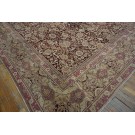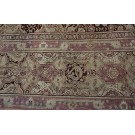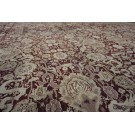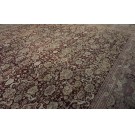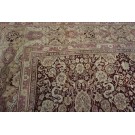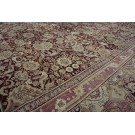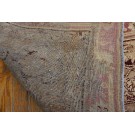Mid 19th Century Indian Agra Carpet
The wine red field is closely covered by a compact sinuous cloud band, palmette, rosette, bird and stiff vinery pattern, all arranged around a small rosette centre. The main border features half and full cartouches and octofoils enclosing stylized peacocks. Indian weavers have made a specialty of square carpets. Well-woven antique in good condition. Measures: 15'8" x 17'0".
| Stock ID: | #17456 |
| General Rug Type: | Indian |
| Specific Rug Type: | Agra |
| Circa: | 1850 |
| Ground Color: | Burgandy |
| Border Color: | Tan |
| Origin: | India |
| Material: | Wool |
| Weave: | Pile - Knotted |
| Shape: | Square |
| Width: | 15' 8" ( 478 cm ) |
| Length: | 17' ( 518 cm ) |
DescriptionAgraLocated in the north-central India about 120 miles south of Delhi, rugs have been woven in this city since about 1600, but it is still controversial whether any of the carpets attributed to Isfahan more actually Agra products. The 19th century situation is clearer: carpets employing the same overall pattern of palmettes and curving vines on ruby red grounds in large, square sizes, are the iconic type. In later 19th century work, the design becomes smaller and denser, the weave heavier, and the red approaches cranberry. Other designs include copies or interpretations of classical Persian patterns, especially after 1890. many very large pieces were woven by inmates of the Agra City Jail on contract to western importers. Good Agras are always in demand and can bring six-figure prices at auction. | |
| Tearsheet Download | |



